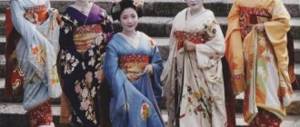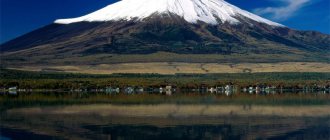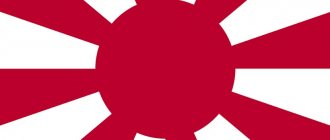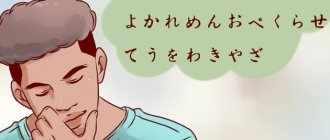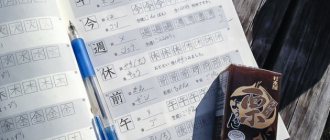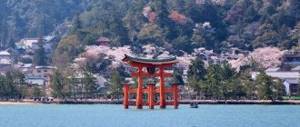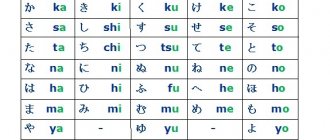Aokigahara Forest, also known as the "Sea of Trees" ("jukai" in Japanese) or "Suicide Forest", is a forested area on the northwestern slope of Mount Fuji in Japan, covering approximately 30 square kilometers. Aokigahara is almost entirely covered with hardened lava, which appeared here during the last major eruption of Mount Fuji in 864 AD. The western part of Aokigahara Forest, which contains several caves ("ice" and "wind") that fill with ice in winter, is a popular destination for tourists and school trips. The forest space in these places is very dense, and the porous lava absorbs sound well, contributing to a feeling of complete privacy.
Aokigahara is a national park that is home to several hiking trails. Visitors here are invited to climb Mount Fuji along the northern slope of the mountain or stroll through a picturesque forest with unusually shaped trees. The forest area is located in close proximity to the capital of Japan, Tokyo, and is therefore quite a popular place for weekends, outdoor recreation and picnics.
The Aokigahara Forest consists of various coniferous trees that have grown on the ground of volcanic rock. According to reviews from tourists, the territory of the massif is very quiet and windless. According to legends, ghosts and demons live in this forest. Over time, the forest at the foot of Mount Fuji became a popular place for suicide. Today, in this sad ranking, it is in second place (after the Golden Gate Bridge in San Francisco) in the world.
© Luzux
Suicides in Aokigahara
Aokigahara Forest is called the most popular place for suicide in Japan. Every year, an incredible number of bodies of desperate people are found here. So in 2002, 78 corpses were found in the forest, in 2003 - 105, and already in 2010, the police recorded more than 200 people who attempted suicide in the forest, of which 54 completed the case. The number of suicides in Aokigahara statistically increases in March, the end of Japan's fiscal year. The most common methods of suicide in the forest are hanging or overdose. In recent years, the local administration has even stopped publishing dry figures in an attempt to reduce the connection between Aokigahara Forest and suicides.
The suicide rate prompted officials to put up a sign at the entrance to the forest urging suicidal visitors to seek help and not commit suicide. Since 1970, the forest has undergone annual body searches with the help of police, volunteers and journalists. The history of suicides in Aokigahara dates back to the 19th century, when in this territory it was allowed to practice the rite of ubasute - the ancient Japanese custom of sending their aged parents to the forest or mountains, where they died of hunger and cold, in order to reduce the cost of extra mouths. Since then, Aokigahara has been strongly associated with death.
© Simon Desmarais
Historical practice
According to the World Health Organization, about 800 thousand people commit suicide every year around the world. Japan is one of the five countries with the highest number of suicides.
In 2015, the country recorded 19.7 suicides per 100 thousand inhabitants - this is one of the highest rates among developed countries.
“Loneliness and isolation from society are the main causes of depression and suicide,” Wataru Nishida, a psychologist at Temple University in Tokyo, noted in an interview with the BBC.
“More and more often we read stories about elderly people who die alone in their apartments. They were abandoned. Children used to take care of their parents, but today they no longer do that,” he says.
Also among the reasons for the large number of suicides, the Japanese tradition of a dignified death is often mentioned.
Many young Japanese refuse to leave their apartments for several months
The samurai practice of seppuku (harakiri), young kamikaze pilots during the Second World War - these examples from history also indicate that the practice of suicide is more typical for Japan than for other countries.
In addition, as Wataru Nishida notes, there are no Christian traditions in Japan, so suicide here is not perceived as a sin. Some, on the contrary, perceive voluntary death as a great responsibility.
When it's not okay to complain
Adding to Japanese financial instability and uncertainty about the future is the society's culture of not complaining, Nishida says.
“In Japan there are few opportunities to express anger or despair. If young people feel depressed or pressured by their superiors, for some of them the only solution to the problem is death,” the expert notes.
In addition, with the development of new technologies in Japan, “hikikomori” is increasingly observed - a unique type of voluntary social isolation, when young people do not want to leave their homes for months.
Movies about Aokigahara Forest
Aokigahara is mentioned in many works of culture and art: literature, cinema, music, anime, manga, video games, etc.
In 1960–61, Seicho Matsumoto wrote the novel Tower of Waves about the mysticism of this forest. Sarah Lotz's 2014 novel features Aokigahara Forest as a place where several characters die. The Sea of Trees by Yannick Murphy is a 1997 novel about a young girl held in detention during World War II.
In 2015, the film “Sea of Trees” was released with Matthew McConaughey, Ken Watanabe and Naomi Watts, which also tells stories that take place in this forest. In the 2016 American film The Forest, a woman (played by Natalie Dormer) travels to haunted Aokigahara to rescue her twin sister. Popular YouTube blogger Paul Logan and his associates visited Aokigahara Forest on December 31, 2021 with the intention of camping there on New Year's Eve. While in the forest, the group came across a dead body hanging from a tree.
Mount Fuji, at the foot of which is the Aokigahara forest, © Tatiana Dudarenko
In 2021, BBC Radio 4 broadcast a program in which four poets went to the Aokigahara forest to write poetry there. The result is a bilingual (Japanese-English) anthology of poems and short essays about Aokigahara called Sea of Trees: A Poetic Gateway to Aokigahara by poets Arai Takako, Jordan Smith, Osaki Sayaka, and Yotsumoto Yasuhiro. Japanese American playwright Christine Haruna Lee wrote and directed the play Suicide Forest in New York City in 2021. It talks about suicide in America and Japan and mentions the Aokigahara Forest. Aokigahara Forest was also featured in the Japanese paranormal reality show The Truth of Truth.
Aokigahara is also mentioned in several musical works: the track “Aokigahara” by the rap duo Suicideboys, the album Aokigahara by the Austrian black metal band Harakiri for the Sky, the video “My Ixxx” by Bis, the song “Aokigahara” by ambient musician Flowers for Bodysnatchers, etc. d.
View of Aokigahara forest from the cable car, © Tatiana Dudarenko
Where is Jukai located and how did it appear?
Aokigahara is located at the foot of Mount Fuji on the Japanese island of Honshu. The mystical history of the object begins in the Middle Ages. In 864, there was a strong eruption of Mount Fuji, which is still considered active today. As a result, a lava plateau measuring 40 km was formed. Later, the Aokigahara Forest grew. Due to the density of the lava rock, the roots are unable to penetrate deep into the soil, and the trees take on strange shapes, often twisting together.
The unusual shape of the trees, writhing like waves, is the reason why the forest area received the name Jukai - sea of trees. There are many ravines and caves here, and in some the ice does not melt all year round.
Most residents try to avoid Aokigihara. The Japanese once brought frail old people and “unnecessary” children here and left them to die. The forest is dense, the cry for help is faintly heard, people died alone with themselves. According to Japanese tradition, those who die by natural causes go to the spirit world, and those who are killed return back to earth to take revenge. Therefore, there is a belief that in the Aokigahara forest, the ghosts of people killed here haunt lonely travelers.
The genesis of suicidal fashion
In the early 2000s, about a hundred bodies of suicides were found annually in the Aokigahara Forest - more and more every year. What are these statistics today? Unknown. Local authorities stopped publishing it, apparently realizing that publishing such data increases the popularity of the place and encourages more people to commit suicide there.
Where did this “fashion” start? It is possible that suicides in Japanese forests have happened before, but it is quite possible to point out the moment when they overwhelmed people like a wave. In 1960, two novels by Seicho Matsumoto were published: Nami no Tou and Kuroi Jukai, mostly based on the themes of the protagonists' suicides committed somewhere in the Aokigahara Forest. For those who fear life more than death, it was enough to come to the forest at the foot of Mount Fuji. However, in the 1990s, Wataru Tsurumi contributed significantly to the forest's dark glory by publishing his "Complete Guide to Suicide" and describing Aokigahara as the ideal place to say goodbye to life.
Death and what next?
In addition to signs warning against venturing into the dangerous thicket, there are also signs in the forest that discourage potential suicides from carrying out their plans. On each of them, in addition to several sentences calling for rethinking the decision to commit suicide, there is a telephone number where a person can get psychological help. The police constantly patrol the forest, arresting those people who decided to get lost in the forest and end their lives there. Despite this, cars continue to be abandoned in nearby parking lots, ropes “grow” on tree trunks, and personal belongings are scattered around them.
Every year, the Japanese suicide forest claims dozens of lives. Due to its size and dense vegetation, many bodies were never discovered. However, this does not mean that no one is looking for them. Volunteers regularly comb the forest, and the bodies found are cleaned and then identified. According to local law, those who are not identified must be cremated at the expense of nearby towns. In 2000, the number of urns containing the ashes of anonymous suicides was 231.
A country of prosperous...depression?
There is a lot of talk about the alarming suicide statistics in Japan. According to WHO, the annual number of suicides per 100,000 inhabitants in 2015 was 15.4. Japan is a member of the G7, that is, the group of the most economically developed countries. Imagination suggests that in such a country you need to live well, comfortably, without financial worries, which means there should be fewer reasons for committing suicide. Meanwhile, in Japan, about 30,000 people commit suicide each year, which is five times the number of traffic accidents.
Suicide is the leading cause of death in Japanese people aged 15 to 39 years. Sociologists see the reasons for this phenomenon mainly in the special work culture that exists in the Land of the Rising Sun. The average Japanese resident spends more than ten hours a day at work, which causes obvious fatigue, limited personal life and health problems. Another factor that may influence the alarming statistics is the replacement of normal human contact with modern technology.
The secrecy of the latest data on the number of suicides committed in the Aokigahara forest makes it impossible to compare the current situation with the situation that took place many years ago. Thus, it cannot be said for sure whether the forest still has the same ability to attract people with suicidal tendencies. However, when you look at the overall suicide statistics in this country, the findings are quite grim. The Suicide Forest probably won't get rid of its scary name any time soon.
Forest of Death
In recent years, Aokigahara Forest has become a world-famous "suicide forest", as one of the most commonly used suicide sites in the world. Signs installed at the entrance to the forest and along its paths tell visitors to think about their families and call the helpline, the number of which is indicated right there on the advertisement.
Aokigahara is a place where, according to tourists, navigational compasses lose their properties. However, this is easily explained - the needles of magnetic compasses will move if they are placed directly in lava, in accordance with the natural magnetism of the rock, which depends on the iron content in it and its strength, depending on the location. However, the compass behaves as expected when held at normal height.
Aokigahara Forest on Google Panoramas
Some statistics
For many people living on our planet, according to life principles, such as deep religiosity, suicide is something completely unacceptable. But a quick glance at World Health Organization data reveals that more than 800,000 people commit suicide every year. The problem is most acute among adolescents and young people aged 14 to 29 years. A 2012 study found that suicide is the second leading cause of death in girls and young men.
Notes
- Of the 37.8 million hectares of the entire territory of Japan, 25.15 million hectares are covered with forests, or 66.6% of the country's area. Added from [slovari.yandex.ru/dict/japan/article/l2.htm Encyclopedia “Japan from A to Z”](inaccessible link from 06/14/2016 (1979 days))
- Japan#Geography
- [www.refine.org.ua/print.php?rid=5431&page=3 RPS Japan]
- [enbv.narod.ru/text/Econom/econom_theory/rps_kneu/str/08.html “Distribution of productive forces” / Lecture notes (KNEU)]
- ↑ 12
[slovari.yandex.ru/dict/japan/article/l2.htm Encyclopedia “Japan from A to Z”](inaccessible link from 06/14/2016 (1979 days)) (Russian) - [kapstroy.kiev.ua/arcives/2004_3/international.htm International relations Japan - Ukraine: a bridge between Europe and Asia] (Russian)
- [www.sort-ref.narod.ru/pageid-4032-3.html World timber market]
- 5500 species of plants and 160 species of trees // Belozerov S.T. Geography of continents. K., Sov. school, 1971.
- ↑ 12
Belozerov S.T. Geography of continents. K., Sov. school, 1971. - [wood-news.com.ua/news/world/1077/ Bamboo forests are advancing on Japan // 02/23/2004 Retrieved 12/02/2008]
- Lacquer wood of Japan // Gortsev Vladimir, “Woodworker” No. 16 (178) August 21 - September 3, 2007
What dangers await tourists?
Excursions are constantly organized here for curious tourists. However, there are many extreme sports enthusiasts who, in search of thrills, go into the suicide forest without a guide. “Why extreme sports,” you ask?
Firstly, it is very easy to get lost in the forest. Neither a compass nor previously accumulated knowledge will help you, since the nature in this place is very specific. Strong magnetic fields prevent the compass from working properly, and strange trees look alike everywhere. That is why any guides, as well as the local residents themselves, warn in advance: never turn off the path. Your curiosity can be destructive.
Secondly, as mentioned earlier, there are legends about evil ghosts. Who knows, maybe the forest of death is actually full of them? In addition, there are a number of unpleasant moments that do not exactly pose any danger, but significantly affect your psychological state. For example, a crunching sound under your feet could mean that you have stepped on an old human bone. And someone’s image in the distance... No, no, not a ghost at all. Just another poor guy who committed suicide, hanging from a branch in the thicket of trees. Not a very encouraging picture, is it?

